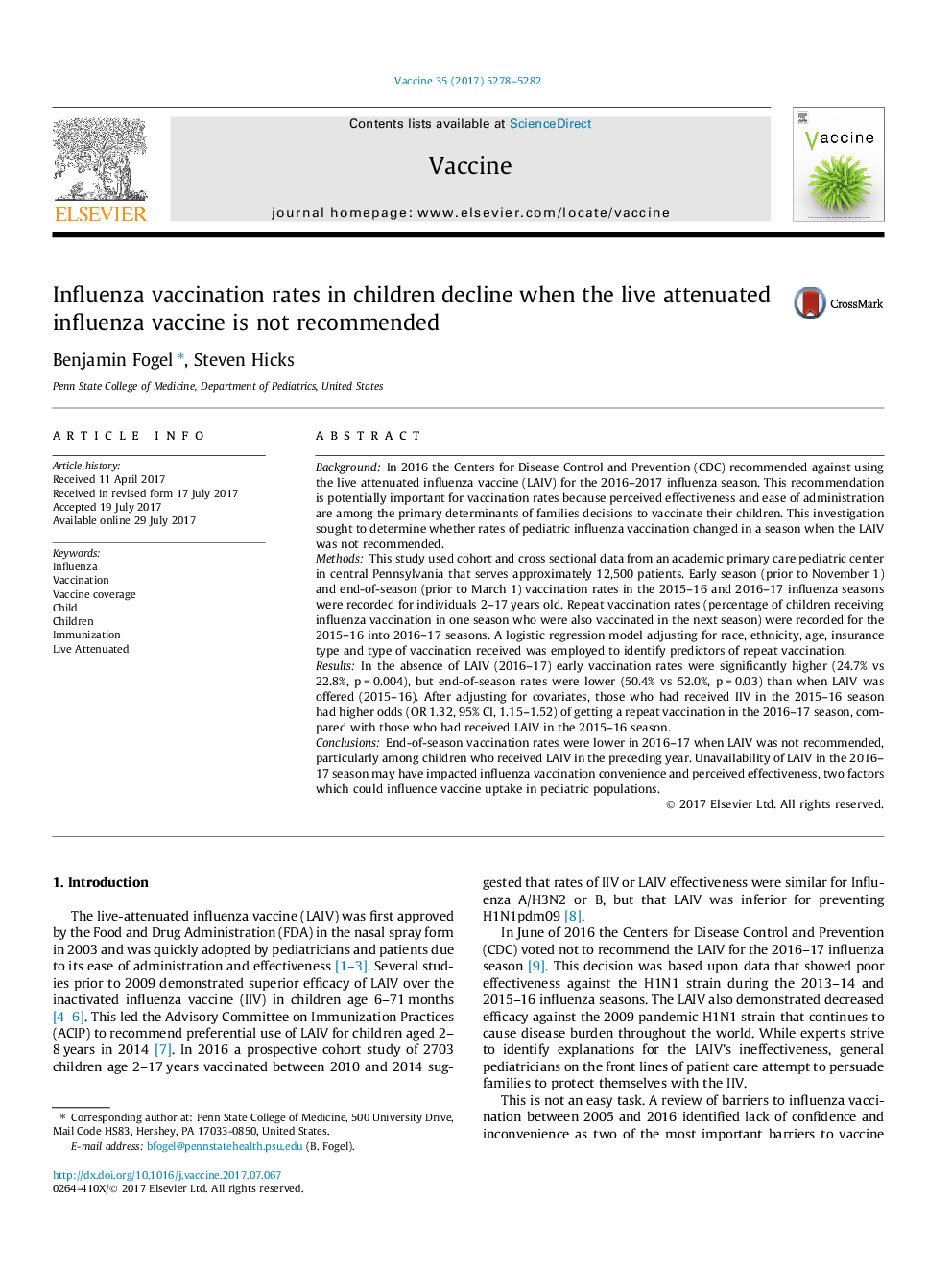| کد مقاله | کد نشریه | سال انتشار | مقاله انگلیسی | نسخه تمام متن |
|---|---|---|---|---|
| 5536887 | 1402309 | 2017 | 5 صفحه PDF | دانلود رایگان |
- Influenza vaccination rates are lower when the live attenuated influenza vaccine is not available.
- Vaccinated patients are less likely to be vaccinated in the next season when LAIV is unavailable.
- Patients receiving LAIV were less likely to be re-vaccinated than patients receiving IIV.
BackgroundIn 2016 the Centers for Disease Control and Prevention (CDC) recommended against using the live attenuated influenza vaccine (LAIV) for the 2016-2017 influenza season. This recommendation is potentially important for vaccination rates because perceived effectiveness and ease of administration are among the primary determinants of families decisions to vaccinate their children. This investigation sought to determine whether rates of pediatric influenza vaccination changed in a season when the LAIV was not recommended.MethodsThis study used cohort and cross sectional data from an academic primary care pediatric center in central Pennsylvania that serves approximately 12,500 patients. Early season (prior to November 1) and end-of-season (prior to March 1) vaccination rates in the 2015-16 and 2016-17 influenza seasons were recorded for individuals 2-17 years old. Repeat vaccination rates (percentage of children receiving influenza vaccination in one season who were also vaccinated in the next season) were recorded for the 2015-16 into 2016-17 seasons. A logistic regression model adjusting for race, ethnicity, age, insurance type and type of vaccination received was employed to identify predictors of repeat vaccination.ResultsIn the absence of LAIV (2016-17) early vaccination rates were significantly higher (24.7% vs 22.8%, p = 0.004), but end-of-season rates were lower (50.4% vs 52.0%, p = 0.03) than when LAIV was offered (2015-16). After adjusting for covariates, those who had received IIV in the 2015-16 season had higher odds (OR 1.32, 95% CI, 1.15-1.52) of getting a repeat vaccination in the 2016-17 season, compared with those who had received LAIV in the 2015-16 season.ConclusionsEnd-of-season vaccination rates were lower in 2016-17 when LAIV was not recommended, particularly among children who received LAIV in the preceding year. Unavailability of LAIV in the 2016-17 season may have impacted influenza vaccination convenience and perceived effectiveness, two factors which could influence vaccine uptake in pediatric populations.
Early vaccination rates in 2016-17 (prior to November 1) are higher (24.7% vs 22.8%, p = 0.004) and end of season vaccination rates are lower (50.4% vs 52.0%, p = 0.03) in 2016-17.118
Journal: Vaccine - Volume 35, Issue 39, 18 September 2017, Pages 5278-5282
